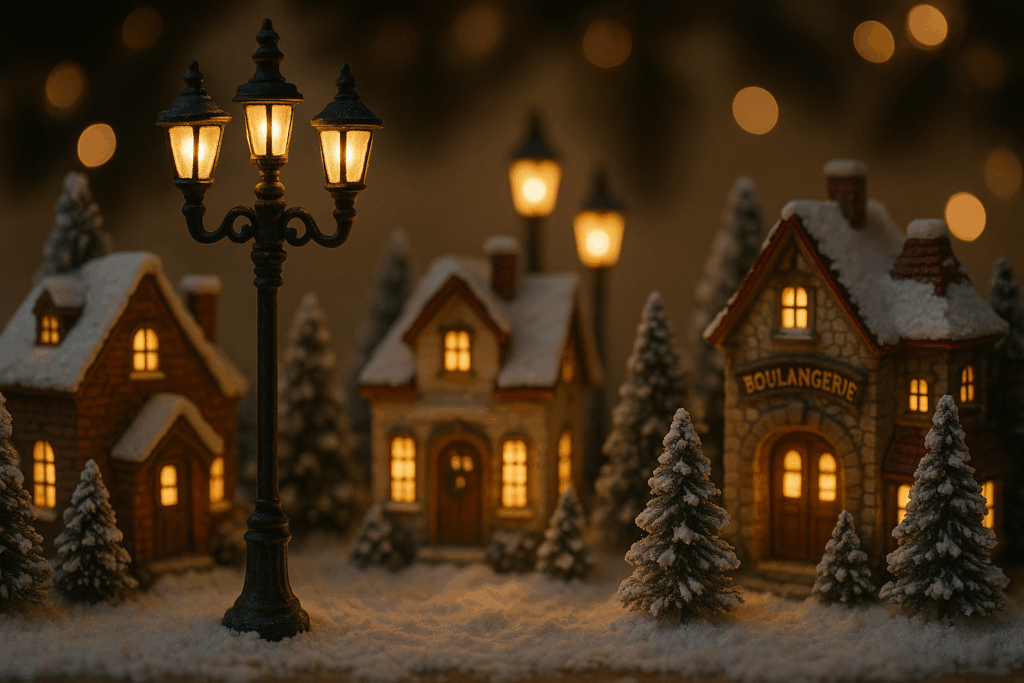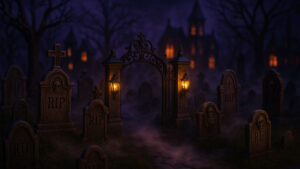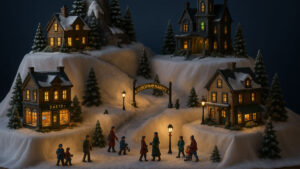Lighting makes the magic. You can have a dozen beautifully detailed buildings, but if the lighting’s off—too harsh, too dim, or just plain messy—it ruins the effect. I learned that the hard way my first year, when a strand of blue-white LEDs made my charming Snow Village look like a department store freezer.
Village Lighting 101 isn’t about complicated setups or buying expensive gear. It’s about knowing the tools, tricks, and little touches that turn your display from cute to captivating.
Let’s walk through what makes a village glow just right.
Know Your Bulbs: Choosing the Right Light Sources
First things first—what are you using to light those buildings?
Most lighted village pieces are designed for:
- Clip-in C7 or C9 bulbs (traditional, warm glow)
- Mini LED cords with multiple sockets
- Battery-operated LED tealights or fairy lights
Each has its pros:
- C7 bulbs: Classic look, slightly yellow glow—great for nostalgia. Get them with ceramic coating for a vintage vibe.
- LEDs: Cool running, long-lasting, and easy to hide. But be careful—they can sometimes be too bright or stark.
- Battery lights: Awesome for hard-to-reach pieces or tabletop displays where cords are an eyesore.
Personally, I mix and match. LEDs for background buildings, warm bulbs for focal points. Adds depth and contrast.
Diffuse That Glow: Tricks for Soft Lighting
Harsh direct light kills the atmosphere. You want warmth, not a spotlight.
Try these tricks:
- Coffee filters or wax paper over bulb holes inside buildings (be safe—never on hot bulbs)
- Frosted LED bulbs instead of clear ones
- Double layer tissue behind windows to soften the shine
If a building looks too “glare-y,” backlight it instead of front-lighting it. It gives the impression something’s glowing from within, which feels more natural and inviting.
Hide the Wires: Keep the Magic Alive
Nothing pulls you out of the moment like a tangled cord jungle. Good lighting is invisible lighting.
Some tips from trial-and-error:
- Use white or green cords depending on your base material (white for snow, green for village mats)
- Cut channels into foam risers or insulation boards to tuck cords
- Use Velcro ties or mini cord clips to anchor things down
Want a pro tip? Label your cords by building. Makes teardown in January way easier.
Accent Lights: Go Beyond the Basics
Lighting doesn’t have to stop at the buildings. Here’s how I add extra life to my setups:
- Tiny street lamps: Some Lemax and Dept. 56 accessories light up and add realism
- Fairy lights in trees or snowbanks: Creates a gentle sparkle effect
- Underlighting beneath risers: Makes the whole village feel like it’s floating on a cloud
And don’t forget day-to-night dimming—hook your lights to a smart plug or dimmer switch. Watching your village slowly “wake up” or “go to sleep” is mesmerizing.
Test, Adjust, Repeat: The Setup Ritual
Every collector has their routine. Mine includes:
- Setting up buildings without lighting first
- Turning off the room lights to check brightness balance
- Moving or swapping bulbs before locking things down
Lighting is more than just flipping a switch. It’s a bit of art and a bit of science. Get it right, and your village will have that just right glow that people remember.
FAQs
What type of light bulbs are best for ceramic village buildings?
C7 or LED bulbs are commonly used. Choose warm white for a cozy glow and avoid ultra-bright LEDs unless diffused.
How do I hide cords in my Christmas village display?
Use foam risers, white/green cords to match the base, and cord clips or channels cut into your platform to conceal wires.
Can I use fairy lights in my display?
Yes! Fairy lights are great for adding sparkle to trees, snowbanks, and background scenes. Just make sure the color temperature matches your main lighting.
Why do some buildings look too bright?
LED bulbs can be too harsh. Try diffusing the light with paper, using dimmer switches, or replacing bulbs with frosted versions.
How do I make my display lighting feel natural?
Mix light types, use soft diffusers, and keep lighting consistent across your scene. Avoid spotlighting and aim for gentle ambient glow.




